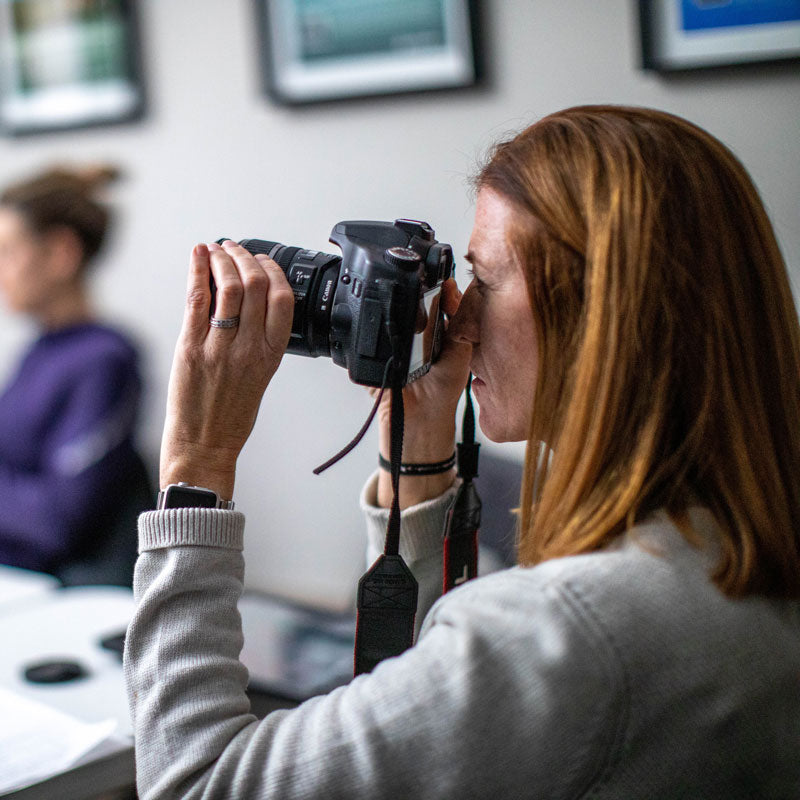If you’re an “auto” mode junkie, you may be missing out on all the creative potential available to your images by making the switch to manual. Always letting your camera select your settings, though, can take the fun out of photography. If you’ve been hesitant to try out your camera’s manual mode, we’ve simplified the basic settings into four easy steps that will help get you out of “auto.”
To understand how to shoot in manual, you first need to understand the exposure triangle. The exposure triangle consists of three things: aperture, shutter speed and ISO.

1. Aperture
Aperture is the amount of light. To put it simply, it is an adjustable hole in the lens that lets light into the camera, much like the iris of your eye. How big or how small that hole is, and how much light is let into the camera, is determined by selecting an F stop.
A large number, like F16 or F22, creates a small opening, allowing less light into the camera. A small number, like F2.8 or F1.4, creates a large opening, letting more light into the camera.
So, if you’re in a dimly lit room or a shady spot and want to let in more light, set a larger F stop. If you’re outside on a sunshiny day and need to limit the light that’s let into the camera, use a smaller F stop (larger number) instead. Controlling how much light comes into the camera through the lens helps you arrive at the correct exposure for your image.

Aperture also controls the depth of field of an image, or how much of the scene is in focus. A smaller aperture keeps more of the scene in focus, while a larger aperture means less of the scene is in focus. Most of the time, smaller apertures like F16 are used in landscape photography while larger apertures like F2.8 are used for portraits.
2. Shutter Speed
The shutter speed is the duration of light or the amount of time that the shutter is open. It helps control how much light gets into the camera by controlling how fast (or slow) the shutter opens and shuts.
A slow shutter speed lets in more light, while a fast shutter speed limits the light. These speeds are expressed as a fraction: 1/800 would be a fast shutter speed, and 1/30 would be slow. Generally, the slowest shutter speed to capture a moving subject handheld is 1/125.

To help determine what speed will work best for you, consider your subject—if you’re shooting a fast-moving subject, keep your shutter speed fast. If you use a slower shutter speed when trying to capture a moving subject you will have motion blur. A tripod can come in handy when taking photos of non-moving subjects using slower shutter speeds.
3. ISO
ISO is the sensitivity to light. It determines how sensitive your image sensor is to the light you let in using your aperture and shutter speed settings. A high ISO number is more sensitive to light, and good for shooting in lower light conditions, while a lower number is less light-sensitive, and perfect for those bright outdoor shots.

How sensitive your camera is to light can depend on the ISO range in your camera. When looking for a camera that can perform well in low-light, look for a higher ISO range. One thing to keep in mind is the higher you go on the ISO, the more grain or noise you will see in your photos.
4. Check the Meter
Once all your settings are dialed in, check your meter. Although a meter’s appearance may vary by manufacturer, they all have a plus (+) side and a minus (-) side.

If your exposure indicator is on the minus side, your image may be under-exposed. You can easily let more light in by:
- Selecting a lower aperture number
- Increasing the ISO
- Choosing a slower shutter speed
If your exposure indicator is on the plus side, the image might be over-exposed. Limit the light coming into the camera by:
- Selecting a higher aperture number
- Lowering the ISO
- Increasing the shutter speed
Continue to adjust settings until the meter reads neutral, or 0. Then simply take your shot—and marvel at how fun and easy it can be to use the manual mode! Remember: you have control over your camera—it doesn’t have control over you.

